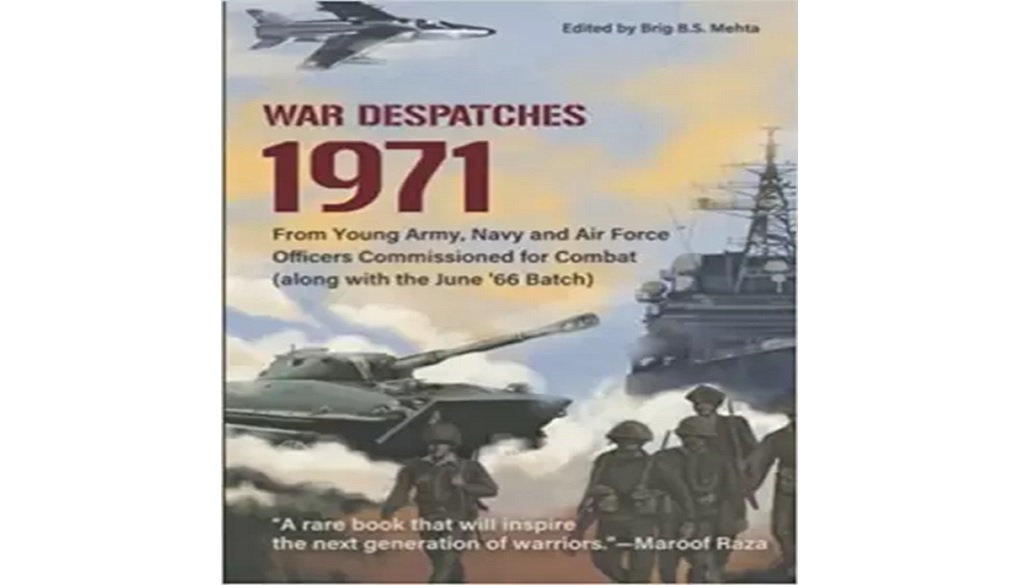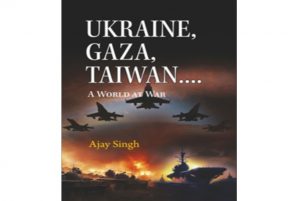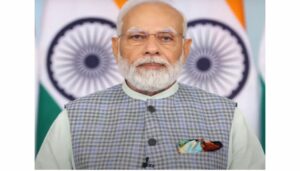BOOK REVIEW WAR DESPTCHES 1971

MAJ GEN JAGATBIR SINGH, VSM (RETD)
New Delhi, 17th September 2023: Literature on war can be written from many perspectives, it can be from the top looking at how the events unfolded or it can be across the unfolding events and also from the ground upwards. How those who were part of the events received their orders, carried out the tasks assigned and their visualisation of being part of an action.
Further, it can be written in the form of individual accounts by senior officers or by strategic analysts, historians and journalists. Finally, it can be written by either of the parties involved or by external independent observers. Each account in its way adds to the literature of the conflict and contributes to understanding events and drawing suitable lessons.
Most books on war are individual accounts of soldiers or their units describing sacrifice and glory. This book is the first collective war experience of young officers of not only the combat arms leading men in battle but also the support and logistic Services like the Engineers, Signals, EME, Ordinance and Supply whose role is equally important
‘War Despatches’ edited by Brigadier BS Mehta (Retired) is unique in many ways. It’s written by a group of officers from the 28 NDA Course.
They belonged to various Services and within various arms and Services. At the time of the War, they were all young officers serving in battalions at the cutting edge of combat or in formation Headquarters which were deeply involved in the conflict. Hence the experiences they have written about are at the ‘tactical level’ and mostly at Company and Battalion level but their experiences have been recounted with the wisdom of hindsight and the maturity of their experiences fifty years after the event.
The 28 NDA batch commissioned on 15 June 1966 has set a new trend for all other NDA batches by publishing ‘War Despatches 1971’ while the country celebrated the Golden Jubilee of Victory in 1971 war with Pakistan. The book contains the first-hand battle experiences of batchmates from different branches of the three Services coming together on a common veteran’s platform after six decades of joint training at NDA.
Having passed out of the Indian Military Academy in June 1966, they joined their units soon after the 1965 War with Pakistan and later in their Service would have been Battalion Commanders during Operation Pawan and Operation Chequerboard and would have been in various appointments including Brigade Commanders while combating insurgency in both J&K and the NE and were Divisional Commanders during Operation Vijay. In fact, both Maj Gen VS Budhwar who was commanding 3 Infantry Division and Maj General (later Lt Gen) Mohinder Puri who commanded 8 Mountain Division were part of this Course. Subsequently, many of course many went on to be Lieutenant Generals including Lieutenant General Arvind Sharma who retired as an Army Commander. Hence their accounts are enhanced by their experience in Service.
Brigadier Balram Mehta is the Editor of this book and has also contributed three essays. In ‘Burinda Bash’; he writes how after the destruction of Pakistan’s 3 (Independent) Armoured Squadron at Garibpur on 21 November 1971, the ‘window of opportunity’ for capture of Dacca was opened but was ‘not exploited’. This is the epic battle in which a Squadron of 45 CAVALRY destroyed fifteen Pakistani Chafee tanks with their PT-76. The Battle of Burinda took place a few days later and has been described in great detail. ‘It was a symbol of Pakistan’s gumption to fight against heavy odds, not witnessed elsewhere in East Pakistan’.
Balram Mehta was a tank troop Leader supporting 4 SIKH who suffered 62 casualties including fourteen killed. He quotes General Jacob an unimpeachable source in his ‘indictment of the quality of higher-level planning, execution and leadership’.
Lieutenant General RSK Kapur writes about the personality of General Sagat Singh who as GOC 17 Mountain Division ‘had taught the Chinese a lesson of their lives’. After carrying out a task for which he had ‘worked tirelessly’ he recalls General Sagat asking his surprised Military Attache to call his ‘son’ and then giving him a tight hug and saying ‘Well done, son’. He calls him ‘the greatest General he ever served with’ and this association ‘taught him some essential character qualities.’
Major General Vinod Budhwar talks about his accompanying a Mukti Bhaini patrol to destroy a bridge in East Pakistan and the difficulties encountered and the manner in which they carried out improvisations to execute the mission.
Brigadier Sukhdev Singh writes about the fog of war where a bridge at Jaintiapur had been captured by the Mukti Bhaini but they filed to hold on to it as they got carried away in their celebrations and began ‘looting the bazaar’ and the officer tasked for the demolition went missing for two days before he finally returned. He also writes about the ‘Khustia Episode ‘; “the attack was a failure. The entire 4 Mountain Division then concentrated on one axis.’
Brigadier Shimi Kanbargimath gives an insight into the human aspects through selected excerpts of letters to his wife. He had been moved to East Pakistan from the Commando Wing in Belgaum where he was an Instructor. He recalls taking a Sikh officer to a hospital in Dhaka after the surrender and how a Pakistani nurse asked if it was safe for her to attend to the Sikh officer, who had a dental issue. She was nervous because; ‘‘They had been told in schools and at home to stay away from Sikh men’. It reveals the psyche created amongst the people.
Air Commodore Arun Karandikar writes about Kilo Squadron a ‘clandestine unit’ formed with a few Pakistani Air Force pilots who escaped from East Pakistan with the refugees. He also recalls Group Captain (later Air Vice Marshal) Chandan Singh a ‘dynamic go -getter’ and how he made him ‘undertake an urgent flight in a Dakota alone. He ended up flying forty-nine sorties including five single sorties in fourteen days.
In ’The Battlefield Blues’, Brigadier Mehta covers the battle of Garibpur including the bravery of Major ‘Chiefy’ Narag the Squadron Commander of 45 Cavalry who was destined ‘to play his role,’ and made the supreme sacrifice was awarded the Maha Vir Chakra. On completion of his orders when he asked his Troop Leaders if they had any questions a newly promoted JCO asked; “Who will give the orders to open fire”. Used to formation level exercises reality had now hit, the war had started. It turned out to be an exceptional and rare tank battle. The early victory served as a trumpet call.
Major Pradeep Sharma recalls being the solitary Sapper having been heli dropped to the location of the advancing Independent Squadron of 7 Light Cavalry to render engineer support. He single handedly prodded the area in front for mines throwing out all the rules for such procedures, Thereafter, deciding that prodding was too tedious he moved on the leading tank observing the area for tell tale signs of mines and he even removed explosives with his hands from a bridge that had been prepared for demolition by the enemy; ‘just doing what you are trained for and able to do’.
Lieutenant General Arvind Sharma was a Captain in a Brigade Headquarter which had moved from Nagaland. He gives an insight into the personality of his Commander Brigadier RCV Apte, the GOC General KV Krishna Rao and Major ( later General) Zia ur Rehman of 8 East Bengal Regiment which was placed under command of the Brigade. He also talks of the manner in which he directed an air strike at Maulvi Bazar on 08 December.
Brigadier Trigunesh Mukerjee was also a Staff Officer as a Captain in a leading Brigade and recalls dealing with questions from the local Bengali population regarding their missing kin who had been picked up by the Pakistani soldiers and were untraceable. He also talks of the war correspondents and remembers the words of Melville DeMello;” if you don’t love the Army, you can never be a War correspondent.
Part 2 of the book covers the Western Front. Colonel Tarlochan Singh Kalra writes about the capture of a Post after the cease fire by 2 SIKH in the Amritsar Sector and the praise given by the Pakistani CO a few days later;” your men fought heroically in battle and were definitely superior”.
Lieutenant General PPS Bhandari writes about his experience as Adjutant of 72 Armoured Regiment a new raising being bloodied in battle and been awarded the ‘Battle Honour Chhamb’. This was also the battle in which Deccan Horse lost Captain Daljinder Singh who ‘lived life king sized’, Brigadier Gautam Tandon has captured his personality perfectly in a moving tribute.
Captain SS Sethi covers the naval operations in great detail. Being the navigating officer of a frontline ship, he was hardly able to sleep during the twelve days. Wing Commander S Balasubramanium describes an operational mission and state how the ‘attack was the ultimate test for a fighter pilot’.
Lieutenant Colonel RC Chetri and Major General Subash Bindra write about inventory management and ammunition supply in war. Major General CP Tewari recalls how ‘they issued supplies without any indents’ and Major (later Lieutenant General) Krishen Bhatia signing the receipt on the back of a cigarette packet. Brigadier ML Jaisinghani writes about the famous battle of Shakargarh where his artillery guns were supporting 3 SIKH LI and ‘brought down accurate fire to silence the enemy’.
Air Commodore Kurivilla gives out his experience as a Prisoner of War including how Bhutto visited their camp in November 1972 and said; “I want you to go home… and please return our prisoners of war.
Lieutenant General Mohinder Puri was posted in 25 Infantry Division as a Captain and describes the build up to the war as also the attack on Poonch which the GOC Major General Kundan Singh had anticipated and asked for additional troops. He sums up his account by saying;’ intelligence continues to remain a weak spot, though our acquisition capabilities have vastly increased’.
Colonel KK Nanda was part of his battalion 13 PUNJAB deployed in Ferozepur and describes leading a Patrol deep into Pakistan and the capture of Southern portion of the Mamdot Bulge in great detail. He says; “his achievement in the war has been the high point of his life”. Brigadier Vijay Rai who was with 15 DOGRA gives out the role of his battalion in capturing the Northern portion of the Bulge. While listing out various ambiguities and shortcomings he concludes by saying; ‘all our shortcomings got drowned in the celebrations’.
Colonel Mahendra Singh Joon was part of 3 GRENADIERS in the historic battle of Jarpal. This is where Major Hoshiar Singh and Lieutenant Arun Kheterpal were awarded the PVC and his CO Lieutenant Colonel VP Airy was awarded the MVC for their gallant actions. He recalls the seven enemy counter attacks and the handing over of the body of Lieutenant Colonel Akram Raja with a citation ‘based on which he was awarded Pakistan’s second highest gallantry award’. Major General PJS Sandhu was also in this Sector as a Staff Captain with 16 (Independent) Armoured Brigade and recalls how Brigadier (later General) Vaidya ‘operated from his track group throughout the war and never came back to his Headquarters, that was the major reason for success of the operations by the Brigade. He was always present at the point of decision.
The 1971 War was a glorious victory in which all cogs of the wheel performed admirably. It was no doubt a whole nation approach and there is a lot of literature covering various facets of the conflict. This remains a rare book as while it is a narrative from the perspective of young officers it is a reflection of their wisdom and experience after many years in service shedding light on significant aspects important to win a war. Their points of view were those of young officers taking orders and passing on orders while being in the thick of action themselves. They were not the decision-makers.
Authored by those who fought the war with grit and courage in the face of adversity. This is a lucid recount of their triumphs and challenges. The book will serve as an inspiration for the next generations of warriors due to the unique insight it has given into a very important chapter of India’s military history. There is no doubt that we as a nation need to salute all those who contributed to the victory and particularly those who made the supreme sacrifice.
Finally, the book serves as an important reminder of the contribution made by the Defence Forces in Nation building. The book records how as young Troop Leaders, Pilots, Sailors they contributed to achieve victory to finally shed the ‘historical baggage of a military defeat’ and emerge as a regional power.
The book serves as a fitting tribute to the NDA, a premier national Institute now celebrating its Platinum Jubilee which played a major role in shaping their character and developed that special ‘ Course Sprit’ where the strength of the wolf is the pack and the strength of the pack is the wolf.








